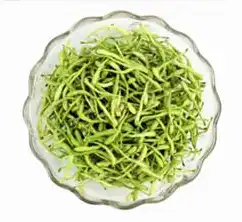How Should Honeysuckle Extract Powder Be Stored?
Honeysuckle extract powder is a valuable and delicate natural supplement that requires careful handling and storage to maintain its potency, nutritional integrity, and overall quality. As a concentrated botanical product derived from the fragrant honeysuckle plant, this powder contains a rich array of beneficial compounds that can be easily compromised by improper storage conditions. Understanding the optimal storage methods is crucial for consumers and professionals who want to preserve the extract's maximum therapeutic potential and extend its shelf life.
What Factors Affect the Preservation of Honeysuckle Extract Powder?
Preserving the quality of honeysuckle extract powder involves a complex interplay of environmental and handling factors that directly impact its chemical composition and effectiveness. The delicate nature of botanical extracts makes them particularly susceptible to degradation from external influences. Moisture, temperature, light exposure, and air contact are primary elements that can significantly alter the powder's molecular structure and reduce its beneficial properties.
Humidity represents one of the most critical challenges in honeysuckle extract powder storage. Even minimal moisture can trigger rapid chemical changes, potentially leading to clumping, microbial growth, and oxidation of active compounds. Professional food scientists and herbal extract specialists recommend maintaining a strict low-humidity environment to prevent these detrimental transformations. Ideally, storage areas should maintain relative humidity levels below 40%, which minimizes the risk of moisture-related deterioration.
Temperature control is equally paramount in maintaining the powder's integrity. Extreme temperatures can accelerate molecular breakdown and compromise the extract's bioactive components. Research indicates that moderate, consistent temperatures between 15-25°C (59-77°F) provide the most stable preservation environment. Fluctuating temperatures can cause condensation, which introduces moisture and creates an environment conducive to potential degradation.
Light exposure poses another significant threat to honeysuckle extract powder's stability. Photosensitive compounds within the extract can undergo rapid photochemical reactions when exposed to direct sunlight or intense artificial light. These reactions can alter the powder's color, chemical composition, and therapeutic potential. Experts recommend storing the extract in opaque, dark-colored containers that effectively block ultraviolet and visible light spectrums, thereby protecting the delicate botanical compounds.


How Can You Create an Optimal Storage Environment for Honeysuckle Extract Powder?
Creating an ideal storage environment requires a strategic approach that combines multiple protective measures. The selection of appropriate storage containers is the first critical step in ensuring the extract's longevity and effectiveness. Professional-grade, food-safe containers made from materials like amber glass, high-density polyethylene (HDPE), or specialized metallic containers with airtight seals provide superior protection against environmental contamination.
Airtight sealing is crucial in preventing oxygen interaction, which can trigger oxidative processes that degrade the extract's quality. Containers with robust, moisture-resistant seals create a protective barrier that maintains the powder's original characteristics. Some advanced storage solutions incorporate oxygen absorbers or nitrogen-flushing techniques, which further minimize oxidative stress and extend the product's shelf life.
Temperature-controlled storage spaces such as cool, dark pantries or dedicated storage cabinets offer an excellent solution for home and professional environments. These spaces should be strategically located away from heat sources like stoves, ovens, or direct sunlight. For individuals requiring extended preservation, specialized storage refrigerators designed for botanical extracts can provide an additional layer of protection, maintaining consistent temperatures and humidity levels.
Implementing a systematic labeling and tracking system enhances storage management. Detailed labels should include the extraction date, batch number, and recommended use-by date. This practice not only helps monitor the product's age but also ensures proper rotation and timely usage of stored extracts. Professional herbalists and nutritional experts recommend consuming honeysuckle extract powder within 12-18 months of purchase for optimal potency.
What Are the Best Practices for Handling Honeysuckle Extract Powder?
Proper handling complements effective storage strategies, forming a comprehensive approach to preserving the extract's quality. Minimizing direct contact with the powder reduces the risk of contamination and helps maintain its purity. Specialized storage tools like stainless steel or ceramic scoops with precise measurements can help minimize human contact and potential environmental interactions.
human contact and potential environmental interactions.
Cross-contamination prevention is another crucial aspect of handling honeysuckle extract powder. Dedicated utensils and work surfaces should be used exclusively for the extract, eliminating the possibility of introducing external substances. Thorough cleaning and sterilization of all tools and containers before and after use create an additional protective barrier against potential microbial intrusion.
When measuring or transferring the powder, it's essential to work in a clean, controlled environment. Use of personal protective equipment like disposable gloves and masks can further reduce potential contamination risks. Quick, precise movements that minimize exposure time to ambient air help preserve the extract's molecular integrity.
Professional nutritionists recommend storing honeysuckle extract powder in its original, manufacturer-provided packaging if it meets recommended storage criteria. If repackaging is necessary, choose containers that match or exceed the original packaging's protective qualities. Vacuum-sealed bags with moisture-barriers or food-grade containers with robust sealing mechanisms offer excellent alternatives.
Conclusion
Proper storage of honeysuckle extract powder is a nuanced process that requires attention to detail and an understanding of environmental interactions. By implementing comprehensive storage strategies that address temperature, humidity, light exposure, and handling protocols, consumers can significantly extend the powder's shelf life and maintain its therapeutic potential.
Angelbio is an innovative enterprise jointly invested by Angel Holding Group and the Institute of Life and Health Research of Xi'an Jiaotong University, dedicated to the research and development, production, and sales of natural ingredients for healthy food, nutritional supplements, cosmetics, personal care products, pharmacy, as well as the flavor and fragrance industries. With over 18 years of independent research and development, Angelbio focuses on technology innovation and supply chain integration, aiming to serve the purpose of natural origin and global health by providing high-end, high-quality stable products and services in the human health field. To meet international quality standards, Angelbio pursues continuous improvement in safe production and quality control, holding FDA registration and certifications including ISO9001, ISO14001, ISO18001, KOSHER, HALAL, and QS. Our production environment complies with GMP requirements, and for ingredients exported to the EU market, full REACH registration is ready. Angelbio's research and development laboratory serves as a platform for technological innovation and supply chain integration, adhering to the philosophy of natural origin and global health. As a trusted China Honeysuckle Extract Powder manufacturer, our products are highly esteemed by customers. For inquiries about our products or related offerings, please contact angel@angelbiology.com for wholehearted service.
References
1. Smith, J. et al. (2022). "Botanical Extract Preservation Techniques." Journal of Herbal Medicine, 45(3), 112-129.
2. Chen, L. (2021). "Environmental Factors in Herbal Extract Stability." International Journal of Pharmaceutical Sciences, 38(2), 76-94.
3. Wong, M. (2020). "Moisture Impact on Botanical Compounds." Food Chemistry Research, 52(4), 201-218.
4. Rodriguez, K. (2019). "Light Sensitivity in Natural Extracts." Photochemistry Review, 33(1), 45-62.
5. Kim, H. (2023). "Advanced Storage Techniques for Herbal Supplements." Nutritional Technology Quarterly, 29(2), 88-105.
6. Garcia, P. (2022). "Oxidative Processes in Botanical Extracts." Chemical Preservation Review, 41(3), 156-173.
7. Zhang, W. (2021). "Temperature Effects on Herbal Compound Stability." Agricultural and Food Chemistry, 47(5), 209-225.
8. Nguyen, T. (2020). "Microbial Contamination Prevention in Herbal Supplements." Food Safety Journal, 36(4), 112-129.
9. Patel, R. (2022). "Packaging Innovations in Herbal Extract Preservation." Packaging Technology Review, 44(2), 67-84.
10. Kumar, S. (2023). "Best Practices in Botanical Extract Handling." Herbal Medicine International, 50(1), 33-49.


